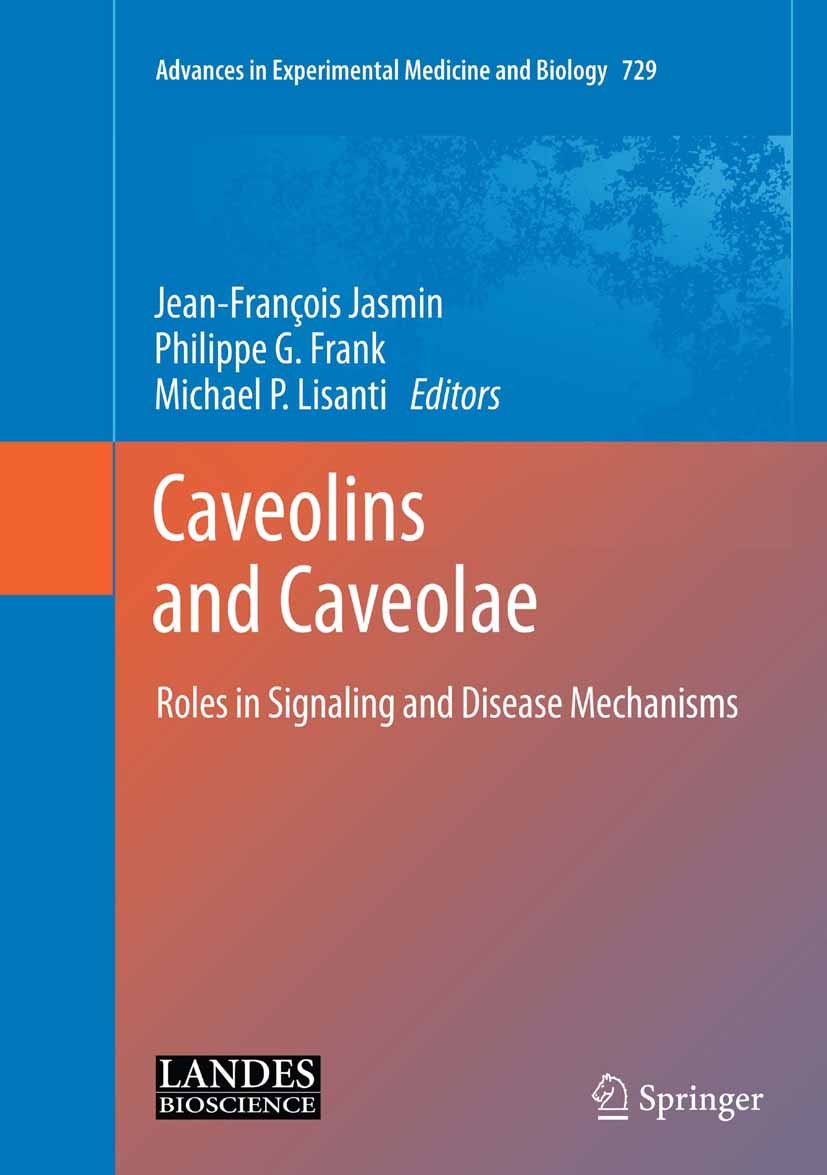| 書(shū)目名稱 | Caveolins and Caveolae | | 副標(biāo)題 | Roles in Signaling a | | 編輯 | Jean-Fran?ois Jasmin,Philippe G. Frank,Michael P. | | 視頻video | http://file.papertrans.cn/223/222676/222676.mp4 | | 概述 | Discusses pleiotropic functions of caveolae and caveolin proteins.Presents the role and function of caveolae and caveolins in cell signaling and human disease mechanisms.Focuses on selected topics | | 叢書(shū)名稱 | Advances in Experimental Medicine and Biology | | 圖書(shū)封面 |  | | 描述 | Caveolae are 50-100 nm flask-shaped invaginations of the plasma membrane that are primarily composed of cholesterol and sphingolipids. Using modern electron microscopy techniques, caveolae can be observed as omega-shaped invaginations of the plasma membrane, fully-invaginated caveolae, grape-like clusters of interconnected caveolae (caveosome), or as transcellular channels as a consequence of the fusion of individual caveolae. The caveolin gene family consists of three distinct members, namely Cav-1, Cav-2 and Cav-3. Cav-1 and Cav-2 proteins are usually co-expressed and particularly abundant in epithelial, endothelial, and smooth muscle cells as well as adipocytes and fibroblasts. On the other hand, the Cav-3 protein appears to be muscle-specific and is therefore only expressed in smooth, skeletal and cardiac muscles. Caveolin proteins form high molecular weight homo- and/or hetero-oligomers and assume an unusual topology with both their N- and C-terminal domains facing the cytoplasm. | | 出版日期 | Book 2012 | | 關(guān)鍵詞 | Caveolae; Caveolin; Frank; Jasmin; Lisanti; Mechanism; Signaling | | 版次 | 1 | | doi | https://doi.org/10.1007/978-1-4614-1222-9 | | isbn_ebook | 978-1-4614-1222-9Series ISSN 0065-2598 Series E-ISSN 2214-8019 | | issn_series | 0065-2598 | | copyright | The Editor(s) (if applicable) and The Author(s), under exclusive license to Springer Science+Busines |
The information of publication is updating

|
|
 |Archiver|手機(jī)版|小黑屋|
派博傳思國(guó)際
( 京公網(wǎng)安備110108008328)
GMT+8, 2025-10-10 02:46
|Archiver|手機(jī)版|小黑屋|
派博傳思國(guó)際
( 京公網(wǎng)安備110108008328)
GMT+8, 2025-10-10 02:46


